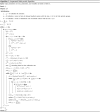Multi-period vaccine allocation model in a pandemic: A case study of COVID-19 in Australia
- PMID: 35431604
- PMCID: PMC8995313
- DOI: 10.1016/j.tre.2022.102689
Multi-period vaccine allocation model in a pandemic: A case study of COVID-19 in Australia
Abstract
While the swift development and production of a COVID-19 vaccine has been a remarkable success, it is equally crucial to ensure that the vaccine is allocated and distributed in a timely and efficient manner. Prior research on pandemic supply chain has not fully incorporated the underlying factors and constraints in designing a vaccine allocation model. This study proposes an innovative vaccine allocation model to contain the spread of infectious diseases incorporating key contributing factors to the risk of uninoculated people including susceptibility rate and exposure risk. Analyses of the data collected from the state of Victoria in Australia show that a vaccine allocation model can deliver a superior performance in minimizing the risk of unvaccinated people when a multi-period approach is employed and augmenting operational mechanisms including transshipment between medical centers, capacity sharing, and mobile units being integrated into the vaccine allocation model.
Keywords: Allocation models; COVID-19 pandemic; Capacity sharing; Mobile units; Multi-period decision making; Vaccine supply chain.
© 2022 Elsevier Ltd. All rights reserved.
Figures












References
-
- Aaby K., Herrmann J.W., Jordan C.S., Treadwell M., Wood K. Montgomery county’s public health service uses operations research to plan emergency mass dispensing and vaccination clinics. Interfaces. 2006;36(6):569–579.
-
- Abbasi B., Fadaki M., Kokshagina O., Saeed N., Chhetri P. 2020. Modeling vaccine allocations in the COVID-19 pandemic: A case study in Australia. Available at SSRN 3744520.
-
- Arifoğlu K., Tang C.S. A two-sided incentive program for coordinating the influenza vaccine supply chain. Manuf. Serv. Oper. Manag. 2021
LinkOut - more resources
Full Text Sources
